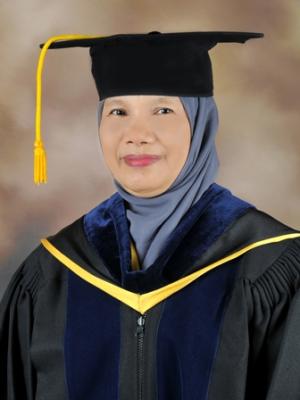Professor of IPB: Utilization of Indonesian Waters Just 20 Percents

Biodiversity of waters in Indonesia was very abundant, but the utilization was still low, namely only around 20 percents. Fish was the biota that was very nutritious for health, because it contained protein that ranged from 12-29 percents, fatty acids of omega 3 namely EPA and DHA which were very good for the intelligence of the brain and retina of the eyes. Fish also contained the good HDL cholesterol, and the environment and the eating cycles were vey well preserved because it was directly available in nature.
The low level of fish consumption in Indonesia was due to the lack of information and knowledge of the importance of eating fish. The consumption level of fish per capita in Indonesia in 2013 was 35 kg/capita/year. In 2014, it increased to 38 kg/capita/year. The level of fish consumption in Indonesia showed the low fish eating culture when compared with Japan (110 kg/capita/year). The program of the increase of fish consumption would be realized if implemented by all stakeholders.
Various researches showed that there were many species of aquatic products untapped both fauna and flora. The potential of Indonesian fisheries needed to be managed properly, so it could be used optimally.
Professor of Faculty of Fisheries and Marine Science (FPIK), Bogor Agricultural University (IPB), Prof.Dr. Nurjanah in the oration of inauguration of her Professorship in Auditorium of Andi Hakim Nasoetion, Campus of IPB Dramaga, Bogor (26/9), presented the results of her research during this time, namely “Karakteristik Bahan Baku Hasil Perairan sebagai Sumber Pangan Masa Depan Indonesia / Characteristics of Aquatic Product Raw Materials as the Food Source in the Future of Indonesia”. According to her, the basic information of raw material data of the aquatic product became useful for the development of food resources in the future.
“The data can be used as a reference for the appropriate product processing techniques, the development of product according to the characteristics, and the application of appropriate technology which fit of the profile of raw material content of the aquatic product. These data also can be used for the development of detection devices which can determine the quality of the products accurately and quickly,” she said.
Every raw material had the potential to be used into the food consumption and non-consumption. The characteristics of the raw materials of the aquatic products that had been studied were including sea water fish, freshwater fish, molluscs, and crustaceans. Nutrient contents covered amino acids, fatty acids, and bioactive components.
The highest of amino acid from crustacean was glutamic acid. The glutamic acid could give the umami taste and delicious, so it could be the substituted of MSG. Besides that, several other amino acids, for example histidine, were also very beneficial for the baby intelligence and also other amino acids which were very useful for the metabolic processes and stimulated the nervous system and for the vitality.
Cod was also potential for development because it contained the amino acids of lysine and glutamate. Some molluscs also contained many amino acids. Bristle shellfish contained many amino acids of glutamate and arginine. Cuttlefish contained amino acids of lysine and glutamate.
“Various kinds of amino acids can be developed into a source of new food products as a substitution for oyster sauce and can be used as a conduit of natural flavor to food. Marine leeches have also been developed as a functional beverage that is very good for body health. Scallop shells, snail tiger, shells out, and shellfish snow have not been popular in the community, but they are contained the amino acids that are quite good. This information is very important to know the community, so that alternative food consumption is good nutritional value,” she said.
Several researches also showed the content of EPA and DHA in fish pelagic consuming a lot of algae. Besides that, the molluscs also contained a lot of unsaturated fatty acids such as omega-3 and omega-6 which could prevent the cardiovascular.
“The research results of this raw material base may be information for the government as a reference to create an appropriate policy. And it can make Indonesia self-sufficient in food in the future and alleviate malnutrition,” she said.(zul)



